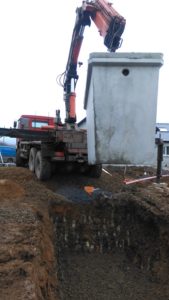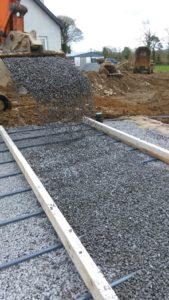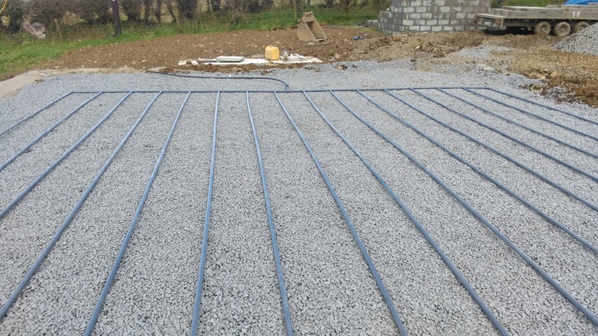Now that spring has sprung and everyone is thinking of building, many people turn their eyes to the Percolation Testing process. Water tables are at their highest in March/April so if your site is prone to a high-water table then this is the worst time of the year to be thinking of doing your test.
A couple of rules of thumb:
- Water tables vary from site to site, field to field. If you are in an area of sandy, gravely soil this is the ideal time to carry out your percolation test, as the water during the test should percolate into sandy gravel at a slower rate at this time of the year.
- If your site is full of reeds, rushes and tufts of grass this give the appearance that the site is heavy, boggy soil. The only time you could ever consider doing a preliminary percolation on this site would be September/October when the water table is at its lowest.
- Prior to carrying out your percolation test it is important to walk the site and consider where you are going to locate your dwelling house. Then decide garage location, entrance, driveway and where the percolation area/septic tank is going to be.
- A general rule for the location of your house on the site is; you will never be allowed to go behind the house on the adjoining site. So therefore, your front building line will never be allowed go behind the back-building line of the neighbour’s house. However, your front building line can line up directly with the rear of your neighbour’s property if you want a larger front garden.

- Percolation area should be kept about 20m from the house, again a rule of thumb. Minimum requirement is 10m; however, to allow for septic tank location and not to interfere with foundations of the house; generally, 20m is considered a good distance. If your site has no mains water connection, then you’re bored well must be a minimum of 30m from your septic tank/percolation.
- The percolation test is carried out by either the Local Authority or independent Engineers. Two weeks’ notice must be given to the Local Authority, so an application is submitted by your agent to tell the Local Authority when the test will be carried out. Generally, the Engineer prefers to carry out the dig on the Monday which allows them to soak the holes on the Tuesday and test the site on the Wednesday.

- During the dig, there are three holes dug with a JCB these are your water table hole, and 2 t-test holes. All the other holes must be dug by hand. The Engineer will test on the third day the T-Test holes and P-test holes. Once the Engineer has completed the test he then does his desktop report which includes getting a GSI Map of Ground Water, Bedrock and several other maps to enter your report to get an accurate result on the percolation of your site.
- Once he has completed this you will get a recommendation on what system will be required on your site. More and more Package Waste Water Treatment Units are being required onsite and these come with a guarantee of performance.
- Once test results are given to your agent then they design the appropriate area for your percolation area allow this on the site layout plan to show dwelling house location, garage, driveway and so on.
- You are now one step closer to obtaining a positive Planning Permission result and all these different sections come together to form your overall application to the Local Authority.
SEE ALSO – Dan Keane: Don’t expect your friends to work for nothing when you’re building your house























